Moving magnet vs moving coil cartridges: which is right for you?
Which type of phono cartridge should you buy?
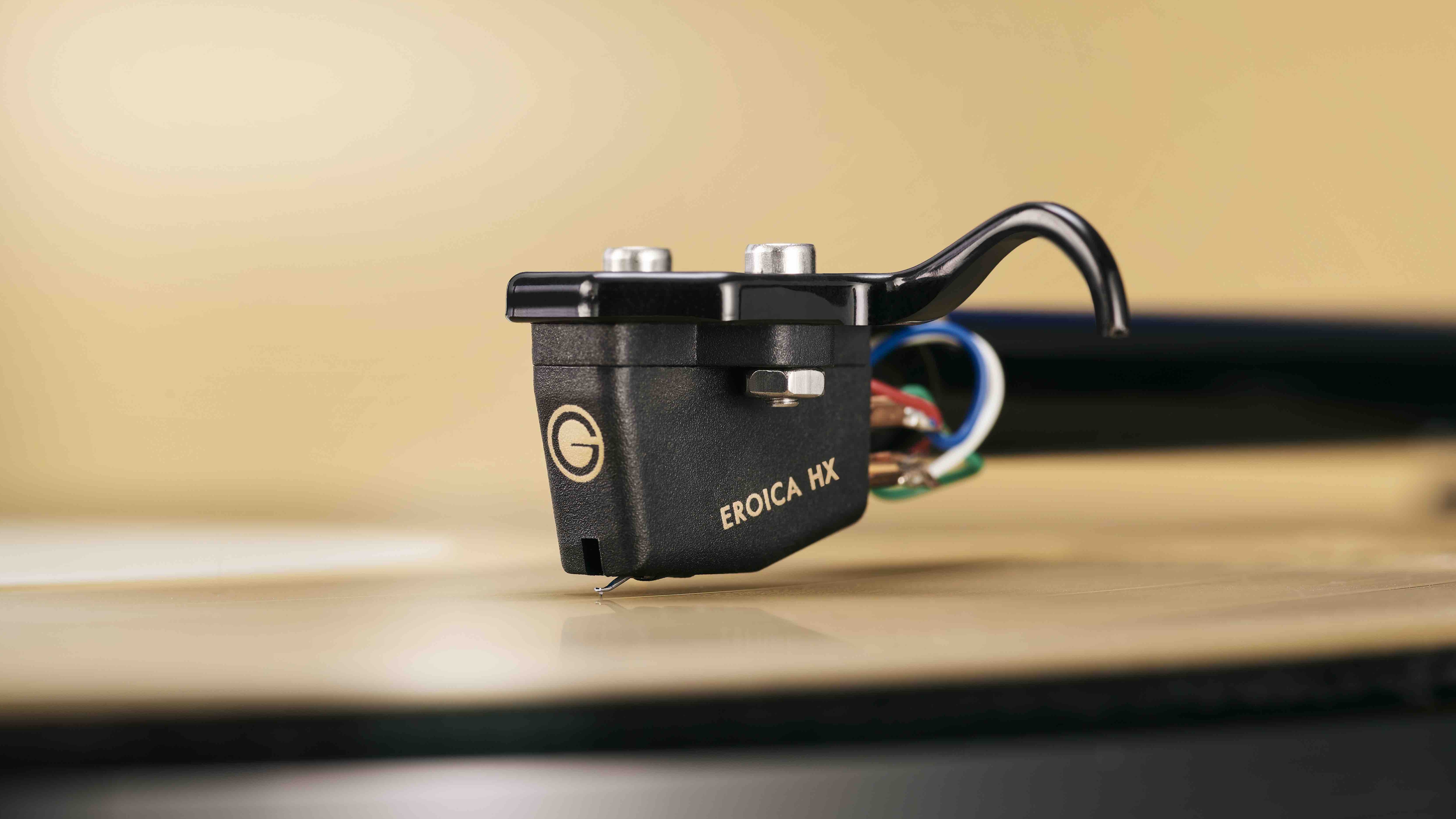
Your record player is made up of three main parts. There is the deck itself, which is responsible for spinning the disc and providing the home for the tonearm and cartridge. It’s the cartridge that we’re going to focus on here. This is the part that actually touches the record groove and generates the electrical signal that subsequently becomes the music you hear out of your speakers.
How cartridges work
A cartridge is essentially an electro-mechanical device. Let’s go back to some GCSE physics. If you move a magnet near a wire then current is generated in that wire. It sounds so simple, but that physics principle forms the basis of how microphones, speaker drive units and phono cartridges all work.
The main parts of a cartridge are its body, the cantilever which has the stylus tip at one end, a thin coil of wire and a permanent magnet. There is also the suspension that allows the cantilever to pivot as the stylus tip tracks the bumps in the record groove. At the other end of the cantilever you’ll find either the coil of wire or the magnet depending on the type of design.
The names say it all, really. In a moving magnet-type cartridge, it is the magnet that is fixed to the cantilever and moves while the coil of wire is fixed in place. The positions are reversed in a moving coil design. What difference does this change of roles make, given that the electrical music signal is generated in both cases?
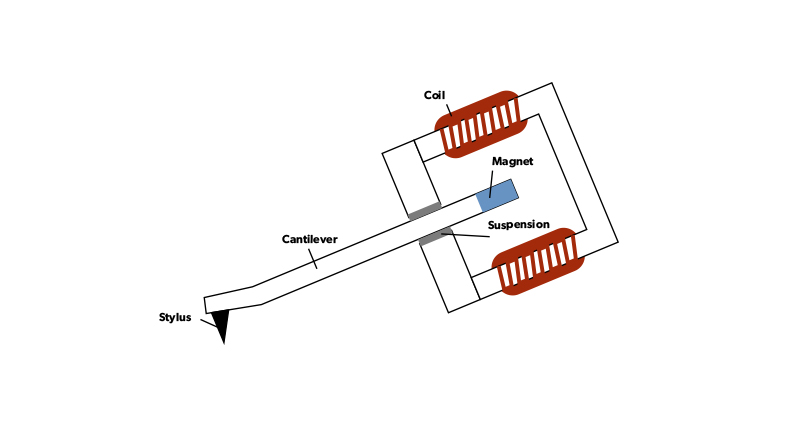
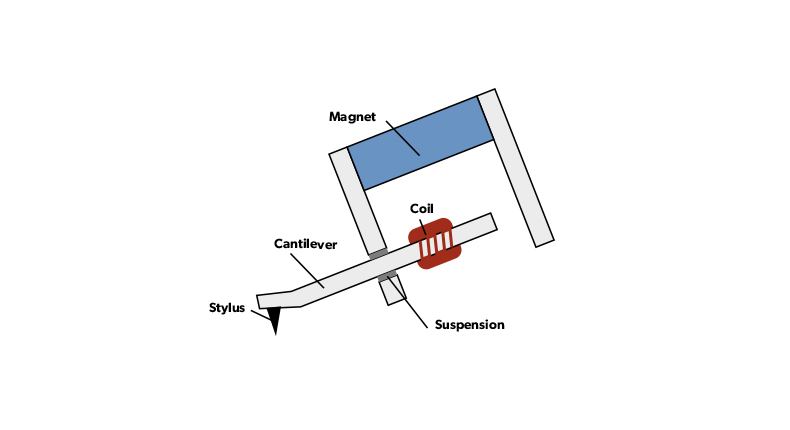
More output, less ability?
The most obvious difference between the two types of cartridges is that moving magnets usually have a higher electrical output. Let’s put some numbers on it. A typical moving magnet cartridge such as Ortofon’s 2M Blue is specified to output 5.5mV. Just contrast that to one of the Danish company’s more affordable moving coils, the Quintet Blue, which delivers a claimed 0.5mV.
These are fairly typical numbers, but there tends to be more variability in the moving coil ranks. It is possible to find high-end moving coils with far weedier outputs than the Quintet Blue, though. The lower output is usually due to a reduced number of coils or thinner wire, both of which reduce inertia and let the stylus react more responsively to the bumps in the record groove. The result? A reduced output level but better detail resolution.
What does the lower output of a typical moving coil mean for you? Most obviously, you’ll need a phono stage that can amplify the signal that much more. The greater the gain of an amplifier, the more its character and distortions are multiplied. In simple terms, you’ll need a better phono stage. You'll also need a suitably talented turntable deck and tonearm to make the most of the cartridge's performance. All these things will cost more money.
The latest hi-fi, home cinema and tech news, reviews, buying advice and deals, direct to your inbox.
Some cartridges try to blur the boundaries, namely high-output moving coils that get closer to the signal levels a typical moving magnet design can manage. They will even work into a moving magnet phono stage, but in our experience, this type of design usually tends to degrade the very qualities that make moving coil cartridges worth having in the first place.
Performance
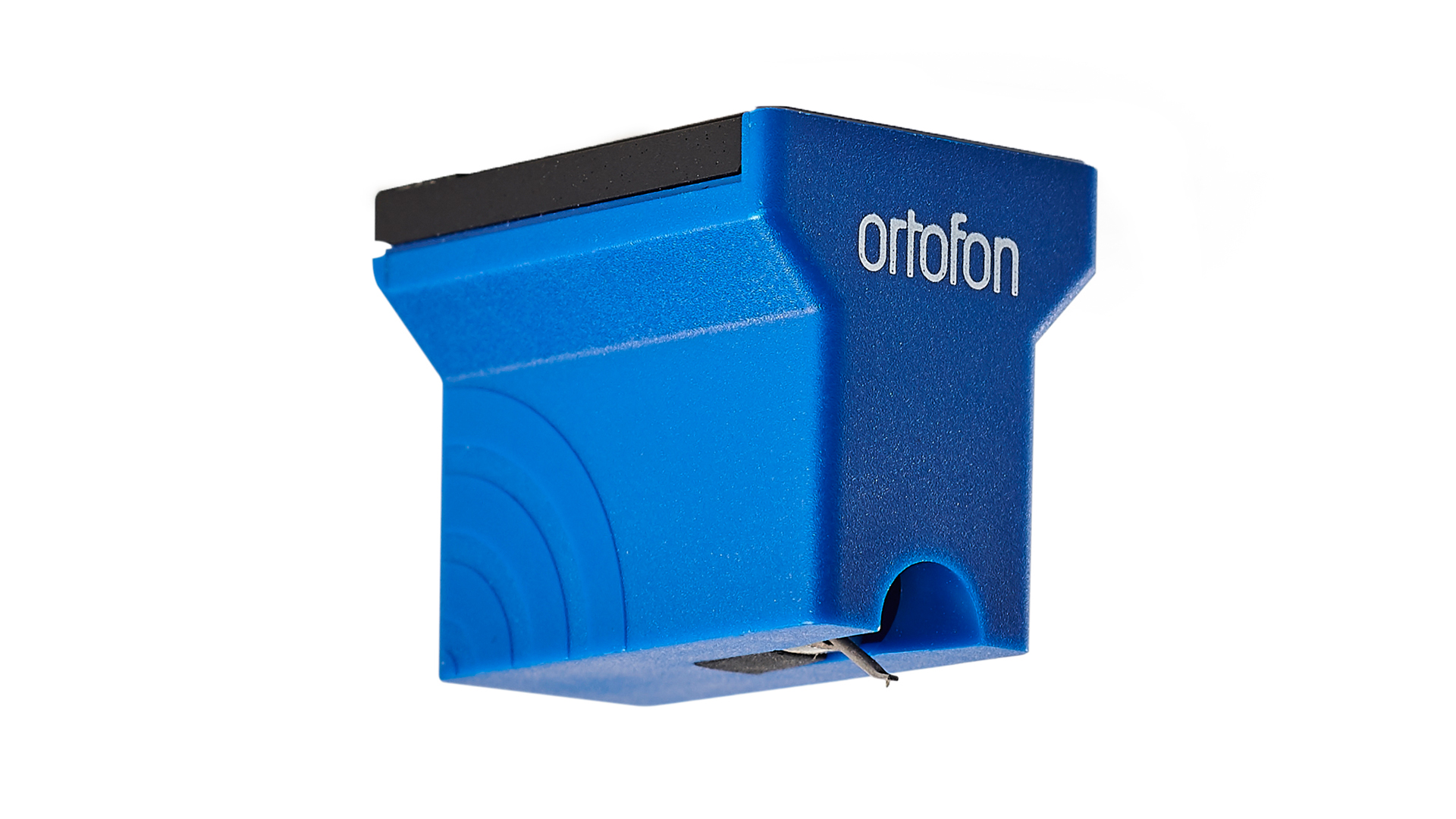
What qualities? Sound, of course. We’re not saying that moving coil cartridges will always sound better, but in our experience, as a breed, they usually deliver more in terms of detail resolution and finesse. Once the prices get closer to four figures they certainly paint with a finer brush, sounding more delicate and articulate than most moving magnet alternatives.
There are also exceptions of course. A premium moving magnet such as Vertere’s Sabre MM is priced well into moving coil territory but still has the ability to impress against such competition, but such products are rare.
Things aren’t totally one-sided with sound quality though. Moving magnets tend to have a more robust presentation, quite often delivering a more muscular and punchy sound. This is probably down to their healthier outputs. We know quite a few people that are happy to forgo the refinement and clarity of a quality moving coil for the greater visceral qualities of a moving magnet cartridge. We totally understand that choice.
Price
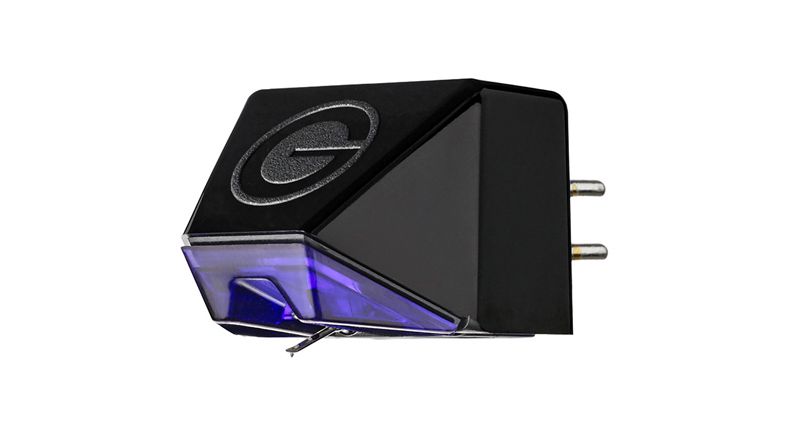
Price comes into this too, with moving coil cartridges typically costing a fair bit more to buy. While good starter moving magnets such as a Goldring E3 can be had for £89/$189/AU$199, our cheapest moving coil recommendation is that aforementioned Ortofon Quintet Blue at £389/$569/AU$695. Quite a difference.
Verdict
So which is the right one for you? As usual with most things hi-fi, there isn’t a straightforward answer here. In most cases, if you’ve got a suitably balanced system where the record player costs less than £1000/$1250/AU$1900, it is best to stick with a moving magnet cartridge. Stretch your budget to the point where the rest of your system can make the most of a good moving coil design and you won't be disappointed. But, there are no hard and fast rules, so feel free to experiment.
MORE:
Ready for a new cartridge? Here's how to change the cartridge on your turntable
See our pick of the best turntables for every budget
Here's our guide to setting up a turntable
...and how to get the best sound from it

Ketan Bharadia is the Technical Editor of What Hi-Fi? He has been reviewing hi-fi, TV and home cinema equipment for almost three decades and has covered thousands of products over that time. Ketan works across the What Hi-Fi? brand including the website and magazine. His background is based in electronic and mechanical engineering.
